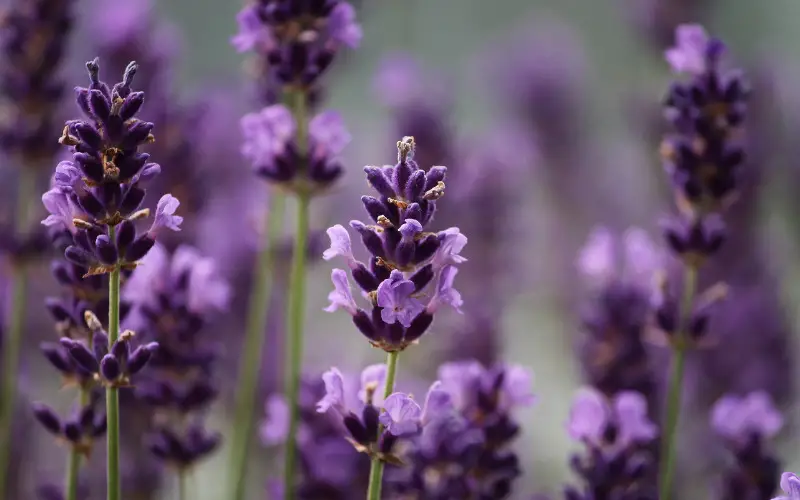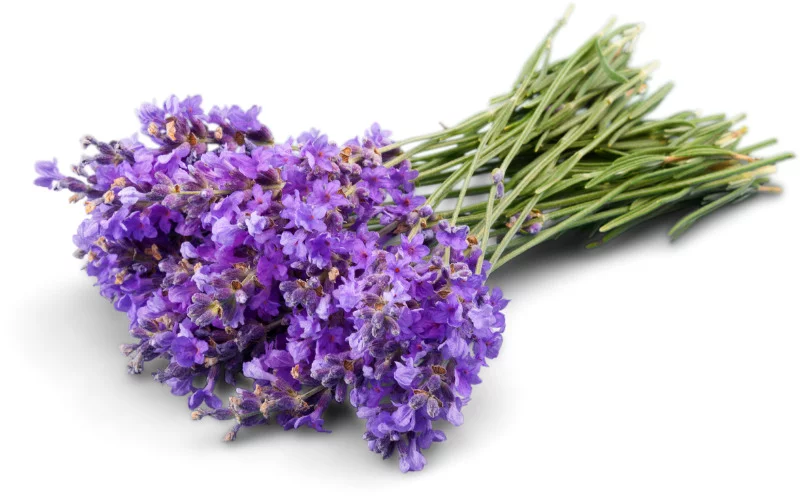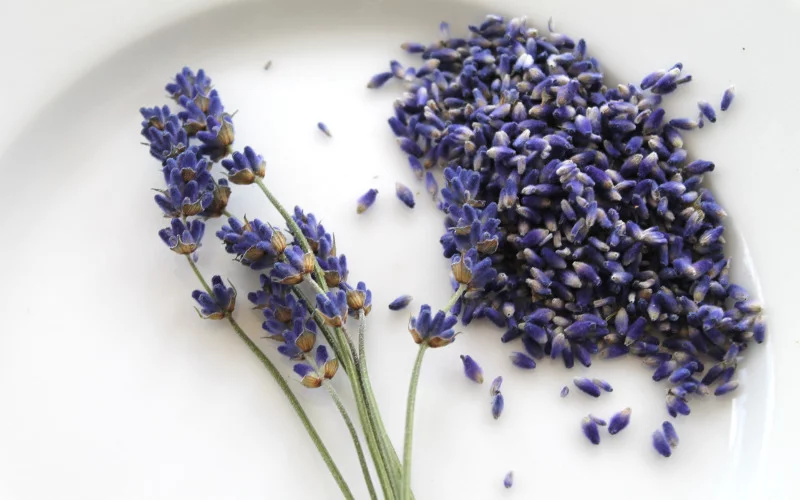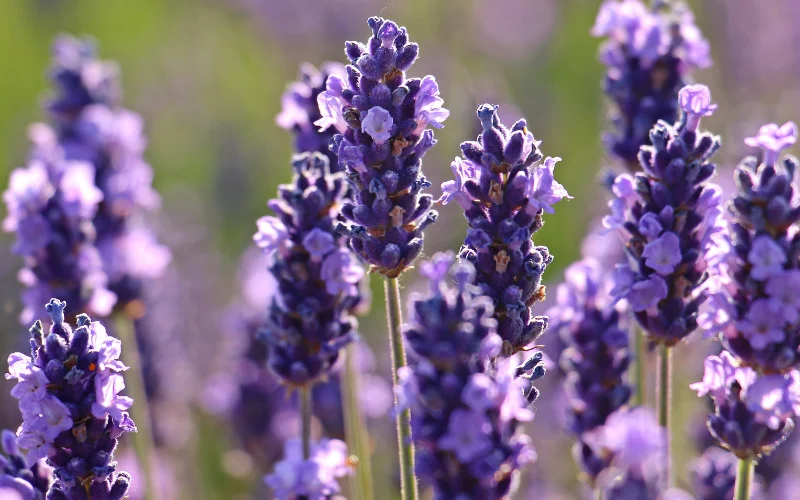Lavender is a beautiful flower with this exotic look and a lovely smell that endears it to our hearts. This rich purple flower can grow in many places, and some varieties thrive even in hot and humid areas like Florida.
For lavender to grow well all year round, especially in a place like Florida, then care must be taken to ensure that the right varieties are grown and that they’re properly cared for, especially in terms of the soil type it is grown in, the amount of rain they get and how they are protected from insects, pests and diseases.
So if you live in any of those very humid and hot parts of the globe and you want to grow lavenders in your garden, then stay put: you are in the right place.
About Lavender Plants
Lavender is a purple aromatic perennial herb that originates from the Mediterranean and the Middle East and is used for both aesthetic and medicinal purposes.
This flower that can attract pollinators and keep insects from constituting a nuisance in the garden has over 450 varieties.
Dont be surprised to find some blue, white, or even pink varieties of this flower. Below are the four main types of lavender that are most common, and they all have dozens of varieties each.
- English Lavender
- Portuguese Lavender
- French Lavender
- Spanish Lavender
Uses Of Lavender
Lavender has a lot of uses, both as a flower that beautifies our environment and as a material for making other products. We find lavender useful in the following ways :
1. Aesthetics
Many grow lavender in their space because it beautifies the environment; that much purple color that almost looks velvety gives a touch of allure and elegance to the garden.
2. Aromatherapy
The scent that lavenders give off has a calming and soothing effect on the nerves. That is why even medical practitioners recommend relieving stress, depression, and other mental illness. The scent helps make people sleep to relax the mind while rejuvenating the body
3. Medicinal importance
Lavender essential oils are of great therapeutic value, and many ailments and disorders can be treated using lavender oil. Lavender oil is very good for the skin and can be applied to the face as well
4. Cosmetics industry
Many cosmetics like soaps, creams, and perfumes use lavender as an active ingredient. Many designer cosmetic companies have a wide range of products that contain lavender, like Lavender talc, sanitizers, Lavender body mists and lotions, body shampoo, and what have you.
5. Flavouring for Food
Lavender is used in flavoring different goods and drinks. There is also lavender tea made from dried lavender flower buds. This tea is drunk mostly by people who have ulcers, menstrual cramps, nausea, indigestion, and constipation.
6. Natural Antiseptic
When Lavender oil is mixed with almond oil or coconut oil, it has cooling properties when applied to the scalp, and it can also kill lice on the head, cure minor burns, skin rashes, and the like.
Does Lavender Grow In Florida?

Even though lavender is a plant that can tolerate a very hot climate, some species can not thrive in such places.
Many varieties of lavender do not grow well in Florida because of the humidity and temperature.
However, some species will grow without any problem in Florida, and one of such species is the Spanish lavender, known botanically known as Lavandula stoechae.
Spanish lavenders love hot and humid weather like you have in Florida, a d when planted in well-drained land, or even when you grow them in pots, they will grow well.
Is it Hard To Grow Lavender in Florida?
Before now, It was a little harder to grow lavender in Florida than it is now, all thanks to lavender hybrids that can stand the hot and humid climate brought about by improved biotechnological know-how.
Hence, many lavender species will easily grow in Florida; some of them include ‘Phenomenal’ French Hybrid Lavender, Goodwin Creek Grey Lavender, and Lavandula Allardii.
These lavender species, amongst others, cannot only stand the hot climate of Florida and other such areas, but they are also tolerant to high humidity and also resistant to diseases.
How to Grow Lavender in Florida?
To grow lavender in Florida, you must ensure that you give it good growing condition and also plant the right variety of flowers so that the lavender will flourish.
These are the ideal situation you must provide for lavender to grow :
1. Sunlight: lavender grows in areas with at least 6 hours of sunlight, and thankfully, Florida can boast of that.
2. Soil type: lavender thrives in dry and sandy soil with poor water retention. Florida has more loamy soil. However, you can remedy the situation by planting the flower in a pot, but ensure that the pot has a hole for drainage.
3. Soil pH: lavenders do well in neutral or slightly alkaline soil with a pH value of about 6.7 to 7.3. lavender can tolerate a pH as low as 6, but the optimum pH for lavenders to grow well is 7.
4. Watering: if you don’t water your lavender correctly, you can kill the flower because excess water will cause fungal infection and subsequent death.
5. Spacing: in Florida, you plant your lavender at least 36 inches apart. This will help keep fungi away from the flower even with the humidity.
6. Temperature: the ideal temperature for most lavender to grow well is 18 to 24 degrees Celcius. Florida gets a little hotter than this temperature range, hence planting heat-tolerant varieties.
Depending on your choice, you can then plant your lavender either by planting the cuttings or sowing the seeds to the garden or the pot.
When & Where to Plant Lavender
Plant lavender depends on the region and the type of variety you will be growing. For people living in areas where the winter is very cold, you shold plant the flower between spring and early fall as this will allow the plant to develop a very strong root system before it gets too chilly in winter.
Early fall is the best time to plant lavender in a warmer environment. Do that before the heavy rains come; your lavender roots would have been fully established. However, in Florida, either fall or winter is the ideal time for planting lavender.
Where you plant your lavender depends on the space that you have. You can plant your flower in your garden if you have some space in there, but you have to be careful not to plant many of them because lavender is a plant that spread so easily.
You can plant them in pots if you do not have a lot of space. However, some people plant lavender on large acres of land, and this is because the flower is grown for commercial purposes.
How To Propagate Lavender
There are two main ways of propagating lavender, and they are:
1. Cuttings
2. Seeds.
Propagating Lavenders from Cuttings

You can propagate your lavender by getting cuttings from an already planted one. Depending on the lavender species you want to grow, and the season of the year you are growing, you can use either softwood cuttings, hardwood cuttings, or hardwood cuttings.
The softwood cuttings are gotten from the tips of new growth, and so they are pliable, while the hardwood cuttings are thicker and harder and so do not easily bend or break as you have with softwood cuttings.
You use softwood cuttings in spring when the growth of lavender is rapid, so you can easily take your cuts without harming the plant. You can get your hardwood cuttings in spring or fall.
Before you start propagating your lavender by stem cuttings, this is the list of things you will need
- Pruning shears
- Knife
- Pot for planting
- Stick
- Rooting hormone and medium
- A parent lavender plant
- A transparent plastic bag
Procedure:
1. Select The Stem You Want To Cut
You should select a suitable stem for propagation if it is healthy, straight, and dies without buds or flowers.
Once you have made your choice, use your pruning shears to cut a height of stem that is about 4 inches from the top. It is best to cut the stem just under a leaf node.
2. Prepare The Stem Cuttings
You can get the stem cut that you just got by removing any leaves close to the bottom and using a knife to remove the skin from one side from about 2 inches of the stem.
3. Prepare The Pot For Planting
You should prepare the Planting pot by almost filling it with a rooting Medium which you can buy in any store where agricultural supplies are sold.
4. Plant the cutting
You should take a dip the skinless and leafless part of the lavender Cuttings into the rooting hormone and afterward insert it into the rooting medium in the pot, ensuring that you make a small hole in the medium where the cutting will go in so that the growth medium does not get rubbed off. Ensure that the cutting is sitting straight in the growth medium
5. Cover The Plant With A Plastic Bag
Use a transparent plastic bag to lightly cover the pot gently to mimic a greenhouse effect on the plant.
Leave the plant like that for a while in a place that has a lot of sunshine and from time to time gently (as carefully as possible so that you don’t break the cuttings) pull on the cutting to see if it is developing roots, if you feel any resistance as you pull, then the root is beginning to form.
6. Facilitate growth
You can help the cuttings to take root quicker by watering it if it becomes dry and by applying 1/4 strength of fertilizer weekly
7. Transplant
Your plant is ready to be transplanted after 2 to 3 weeks into a new flower bed, garden, or pot.
How To Propagate Lavenders From Seeds

Propagating lavender from the seed is very simple; all you need to do is get your lavender seed from agricultural supply stores. These seeds are sown 1/8 inches below the soil surface.
A perlite mixture is used to cover the seed. You should keep the soil warm and moist and apply fertilizer weekly. After 2 or 3 weeks, you should have a partially established lavender plant which can then be transplanted.
How To Care For Lavender Plants
Lavender requires as much care as most ornamental plants do if they keep growing and producing new flowers; below are some caring regimes that you can apply to ensure that your lavender continues to blossom and look lush.
1. Fertilizing Application
Even though lavender is not a plant that requires a lot of fertilizer, you should apply fertilizers at least once a year. Eco-friendly organic fertilizer is preferable. Hence a fertilizer that is composed of manure and bone meal.
The best time to apply fertilizers for your newly transplanted lavender is after you water it the first time. However, you should ensure that the soil is not wet before you apply the fertilizers.
2. Watering
Because lavender grows well in well-drained soil, it does not need to be watered frequently; in fact, you shouldn’t water them more than twice every week, and the amount of water applied should not be excessive so that you don’t cause the soil to become waterlogged. If your lavender is posted, you must ensure that the pot has holes for drainage purposes.
3. Pruning
You need to prune your lavender’s so that they can blossom and also put out new branches so that it doesn’t age on time.
You should prune the plant at least once every year, and it should be during harvest season in early spring. Pruning is done so that 1/3 of the plant is cut so that new shoots development is not hampered.
FAQs
Does Lavender Need Full Sun?
Lavender needs full and direct sunlight for them to grow well. They require only 6 hours of sunlight daily, even though some varieties will grow under shade like the English Lavenders.
However, most varieties of lavender will die if the sunlight is not enough because the soul will always be damp, which will lead to roots which is one of the main causes of death of Lavenders.
Does Lavender Grow Well in Central Florida?
The answer to that question is: it depends on the species. Unfortunately, most lavenders varieties will not grow well in central Florida.
However, a few species and varieties love sunny and hot weather, like the Spanish lavender, botanically called Lavandula stoechas.
You can plant this species in Central Florida as you have well-drained soil, and even if you do not water so frequently, the plant will flourish.
How Often Should Lavender be Watered?
Lavender does not love a lot of water; the right quantity of water should be applied not more than twice a week; once a week is even advisable.
How Long Do Lavender Plants Last?
Lavenders do not last for so long, but the number of years it stays alive depends on the species and the kind of care it receives.
Tender varieties of lavender live for only five years or thereabouts. The hardy types can live for up to 15 years, if not 20 if they are correctly pruned and taken care of
What Month Does Lavender Flower?
The month that Lavenders flower depends on the region and the variety. English lavenders varieties like ‘Folgate’ and ‘Lavenite Petite,’ flower in early to mid-May, others like ‘Royal Purple’ and ‘Thumbelina Leigh’ flower in June.
There are also hybrid lavenders that flower in July and August. By and large, most lavenders flower between May and August.
Does Lavender Grow Well in Pots?
Most lavenders varieties grow well in pots in as much it has enough space for the roots, the pot has a hole for drainage, and adequate growth condition is made available.
However, some varieties do better than others when planted in a pit, varieties like Dwarf blue, Sharon Roberts, Sweet, Munstead, and Hidcote.
Why Do my Lavender Plants Keep Dying?
There are many reasons why your lavender plant can be dying; one of the reasons is that they have outlived their life span. Other reasons could be that they are being over-watered or over-fertilized, which causes the plant to die.
You can also check if some pests and diseases are bothering the plants as they are responsible mostly for why lavenders die. You could also check your soil to ensure that the pH is optimum.
How Do You Know If You’re Overwatering Lavender?
Your lavender is over-watered if it begins to look droopy and has brown foliage, and if you persist in over-watering the plant, the roots will start to root and turn dark and mushy. If your soil is always looking waterlogged, then your flower is over-watered.
Does The Plant Lavender Come Back Every Year?
Yes, indeed, lavender keep coming back every year for even up to 5 years in as much as you care for them properly.
Is Lavender Toxic?
Lavender is not harmful to humans even it is ingested. Even though children who ingest a sizeable amount of lavender will show some symptoms of mild toxicity, asides from that, they are completely safe for men but not so much for cats and other pets.
Conclusion
Lavender is an ornamental plant that people grow both for beautifying their space. As a raw material for making many products, especially those for cosmetics and medicinal purposes, hence the reason many people grow lavender.
Your lavender will thrive anywhere, even in hot and humid places like Florida, in as much as you provide the right growth conditions like 6 hours of sunlight daily, correct pruning and watering, planting the right variety, and generally caring.
Helpful Links:
- How To Compost Corn Plants
- Can You Compost Pineapple?
- Do Acorns Kill Grass
- How Do You Grind Compost?
- Should I Mix Grass Seed with Topsoil
We trust this article helped you know the Tips for Growing Lavender in Florida. You may also want to check out How to Grow Yellow Daisies in Your Garden.
Thanks for taking the time to read our article, and we hope you find it helpful. Would you mind leaving a comment below if you have any suggestions?
Kindly reach out to people by sharing this post on social media.
If you liked this article, then please follow us on Facebook, Instagram, Twitter, and Pinterest.

